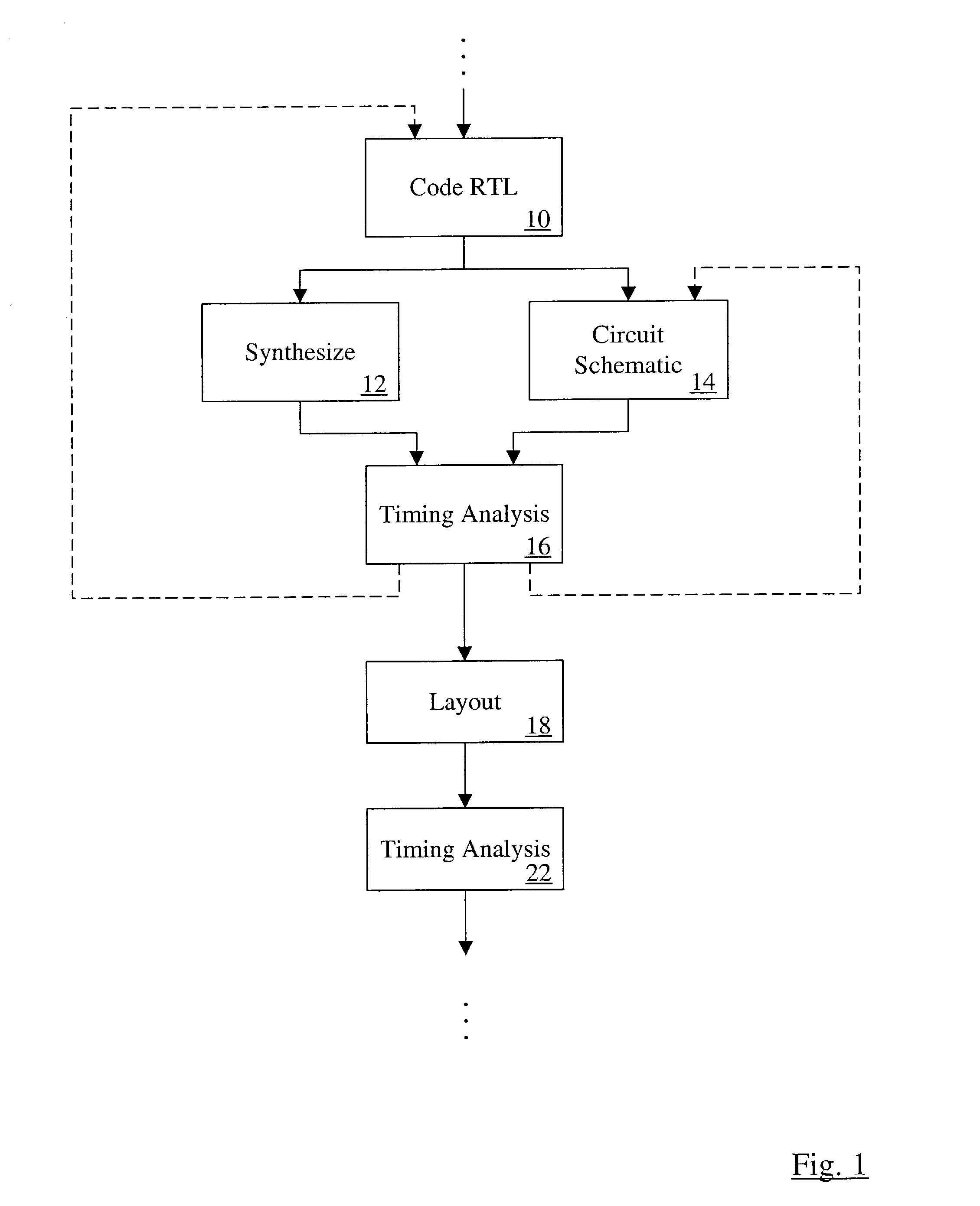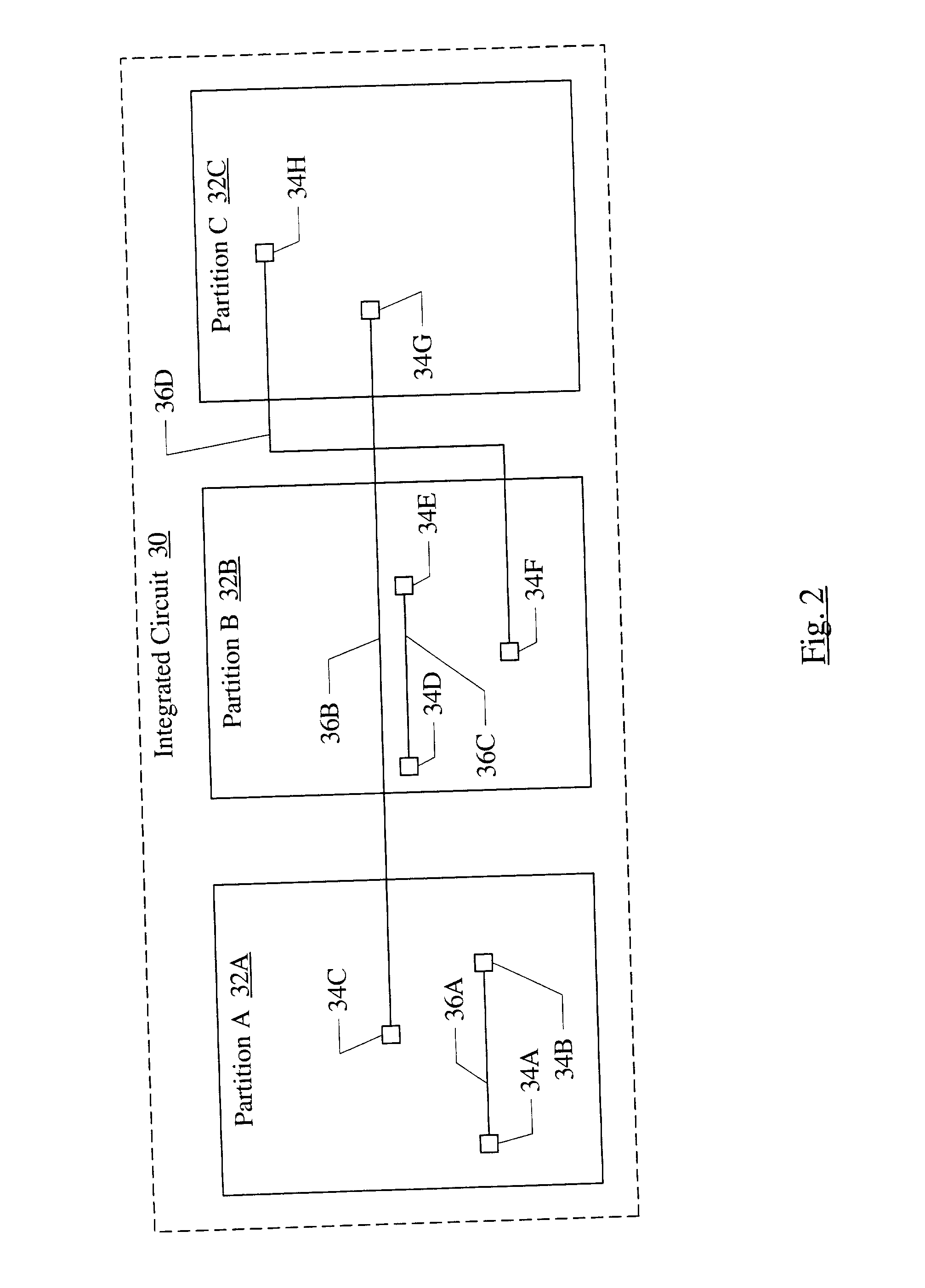Modeling miller effect in static timing analysis
a technology of static timing analysis and miller effect, which is applied in the direction of resistance/reactance/impedence, program control, instruments, etc., can solve the problems of complex and time-consuming analysis, inability to accurately reflect the delays experienced, and inability to accurately model the static timing data of the wir
- Summary
- Abstract
- Description
- Claims
- Application Information
AI Technical Summary
Problems solved by technology
Method used
Image
Examples
Embodiment Construction
Design Flow Overview
[0021] Turning now to FIG. 1, a block diagram illustrating one embodiment of a portion of a design flow is shown.
[0022] Once the integrated circuit design has been divided into one or more blocks of functionality (more briefly referred to herein as partitions), the designer may code a register-transfer level (RTL) description of each partition (reference numeral 10). Any hardware design language (HDL) may be used as the language for the RTL description (e.g. VHDL, Verilog, etc.). The RTL description may comprise one or more files per partition, as desired.
[0023] The designer may choose to use a synthesis tool to synthesize the RTL description to a netlist (reference numeral 12). The synthesis tool takes the RTL description and a library of cells (predesigned circuits which have one or more inputs and produce one or more outputs as a specified function of one or more inputs) and generates a netlist of cells, linked together in such a way as to provide the function...
PUM
 Login to View More
Login to View More Abstract
Description
Claims
Application Information
 Login to View More
Login to View More - R&D
- Intellectual Property
- Life Sciences
- Materials
- Tech Scout
- Unparalleled Data Quality
- Higher Quality Content
- 60% Fewer Hallucinations
Browse by: Latest US Patents, China's latest patents, Technical Efficacy Thesaurus, Application Domain, Technology Topic, Popular Technical Reports.
© 2025 PatSnap. All rights reserved.Legal|Privacy policy|Modern Slavery Act Transparency Statement|Sitemap|About US| Contact US: help@patsnap.com



